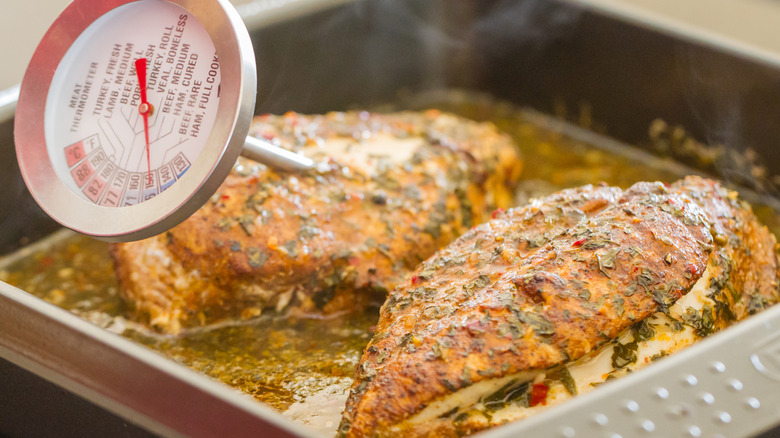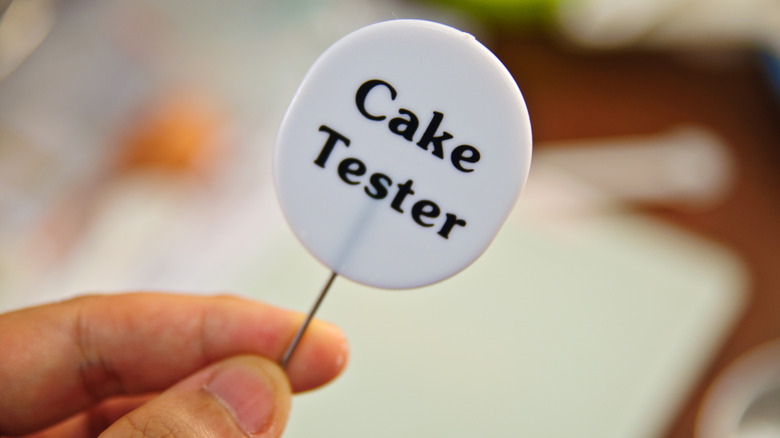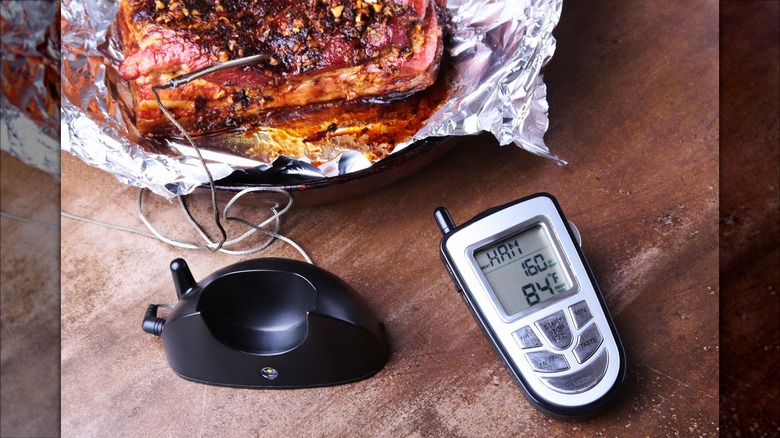If You Don't Have A Meat Thermometer, A Cake Tester Will Do The Trick
We may receive a commission on purchases made from links.
Cooking an exquisite piece of meat to the perfect temperature can be tricky. Seasoned chefs often learn to do it by touch and sight alone, but that takes practice. Most people will depend on a trusty thermometer to ensure their prized cuts of meat are cooked just right, but if you don't have one, a quality meat thermometer can be expensive. You probably already have something in your kitchen cabinets that can do the trick instead. A secret even experienced chefs use to test the doneness of meat is to use a cake tester.
People typically use cake testers to check if a cake has been baked all the way through and hopefully avoid the mistake of pulling it out of the oven prematurely. The beauty of this kitchen tool is its simplicity; a cake tester is just a thick metal wire attached to a handle, and it's designed to be used the same way one would stick a toothpick into a cake to see if it comes out clean, signifying it's fully baked. But you can utilize this tool for a purpose other than its intended design: checking your cooked cut.
How to test meat with a cake tester
To test the doneness of your meat with a cake tester, stick it into the thickest part of the cut, and leave it in for about 10 seconds. Once it's had a chance to match temperature with the core of the protein, remove it and momentarily place it on a tender part of the skin, like your wrist. Ensure you don't leave it there long, as at about 145 degrees Fahrenheit (about medium well for beef, pork, and lamb), five seconds is enough to incur a burn.
Naturally, the warmer the cake tester feels on your skin, the more done it is. And if you immediately recoil from the heat of the probe, you know you're approaching or (heaven forbid) past the point of doneness. To retain juiciness in the center, the goal is to pull off the meat before it (and thus the end of the probe) is hot.
If the tester is cold, your meat is still raw in the middle. For a medium-rare steak or duck breast, the tester should feel slightly cooler than your skin. You won't want to take any chances on poultry, so with that, you're going for a temperature that will immediately feel sizzling hot. As you use this method more often, it will help train your senses of sight and touch, and you should begin to notice when meat is ready without using the cake tester at all.
A cake tester saves money and helps you learn to cook intuitively
Quality meat thermometers come in all shapes and sizes and are available for varying prices. Whereas high-end digital thermometers can cost over $100, the average price of a cake tester is under ten dollars. A good meat thermometer will give you an accurate reading of the temperature of your favorite cuts, but you have to ask yourself if it is worth forking over that extra dough for something you can do with what is essentially a glorified toothpick, and only costs a few bucks.
Taking the guesswork out of your cooking doesn't need to be expensive, and it shouldn't require years of training. A simple cake tester will assist you in learning how to tell when your meat finishes cooking without breaking the bank. You can take the extra cash you save using a cake tester to check your meat instead of a thermometer and buy a nice bottle of wine that fully complements your perfectly cooked meat.


